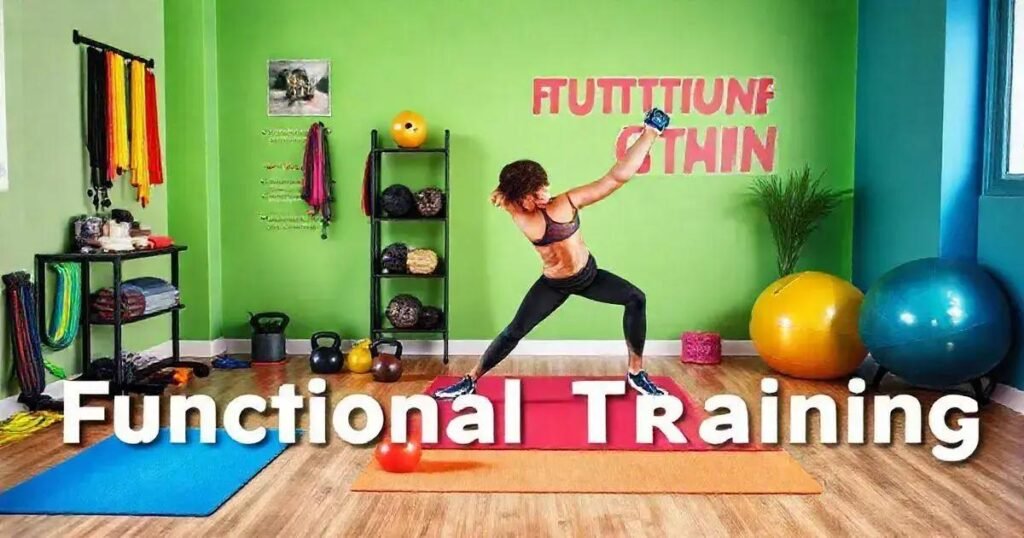Are you tired of feeling stuck in your fitness journey? Do you struggle to see results from your workouts? Functional training might be the answer you’ve been searching for.
This type of training focuses on exercises that mimic real-life movements, helping to improve strength, flexibility, and overall physical fitness.
By incorporating functional training into your routine, you can experience a range of benefits, from increased strength and flexibility to improved weight loss and overall physical performance.
Table of Contents
Benefits of Functional Training
Benefits of Functional Training: Functional training offers numerous benefits, including improved strength, flexibility, and overall physical fitness. It also helps to increase muscle mass, boost metabolism, and enhance joint mobility. Additionally, functional training can reduce the risk of injury, improve coordination, and enhance overall athletic performance. Whether you’re a professional athlete or a fitness enthusiast, functional training can help you achieve your goals and improve your overall well-being.
The Science Behind Functional Training: Functional training is based on the principles of exercise science and kinesiology. It involves exercises that mimic real-life movements, such as squats, lunges, and deadlifts, which help to improve strength, flexibility, and overall physical fitness. The science behind functional training also emphasizes the importance of proper form and technique, as well as progressive overload to continue challenging the muscles and promoting growth.
Functional Training Exercises: Functional training exercises are designed to mimic real-life movements and improve strength, flexibility, and overall physical fitness. Some examples of functional training exercises include burpees, jump squats, and box jumps. These exercises can be modified to suit different fitness levels and goals, making them accessible to everyone. By incorporating functional training exercises into your routine, you can improve your overall fitness and prepare for everyday activities.
Functional Training for Weight Loss: Functional training can be an effective way to lose weight and improve overall physical fitness. By incorporating functional training exercises into your routine, you can burn calories, build muscle, and boost your metabolism. Additionally, functional training can help to improve joint mobility and reduce the risk of injury. Whether you’re trying to lose weight or maintain weight loss, functional training can be a valuable addition to your fitness routine.
Functional Training for Increased Strength: Functional training is an effective way to improve strength and overall physical fitness. By incorporating functional training exercises into your routine, you can build muscle, increase power, and enhance overall athletic performance. Additionally, functional training can help to improve joint mobility and reduce the risk of injury. Whether you’re a professional athlete or a fitness enthusiast, functional training can help you achieve your goals and improve your overall well-being.
Functional Training for Improved Flexibility: Functional training can be an effective way to improve flexibility and overall physical fitness. By incorporating functional training exercises into your routine, you can increase range of motion, improve joint mobility, and reduce the risk of injury. Additionally, functional training can help to improve strength and overall athletic performance. Whether you’re a professional athlete or a fitness enthusiast, functional training can help you achieve your goals and improve your overall well-being.
The Science Behind Functional Training
The science behind functional training is rooted in exercise science and kinesiology. It emphasizes the importance of proper form and technique, as well as progressive overload to continue challenging the muscles and promoting growth.
This approach helps to improve strength, flexibility, and overall physical fitness, while also reducing the risk of injury. Additionally, functional training exercises can be modified to suit different fitness levels and goals, making them accessible to everyone.
By understanding the science behind functional training, individuals can make informed decisions about their fitness routine and achieve their goals more effectively.
Functional Training Exercises
Functional training exercises are designed to mimic real-life movements, such as squats, lunges, and deadlifts. These exercises help to improve strength, flexibility, and overall physical fitness by challenging the muscles in a variety of ways.
Examples of functional training exercises include burpees, jump squats, and box jumps. These exercises can be modified to suit different fitness levels and goals, making them accessible to everyone.
By incorporating functional training exercises into your routine, you can improve your overall fitness and prepare for everyday activities.
Functional Training for Weight Loss
Functional training can be an effective way to lose weight and improve overall physical fitness. By incorporating functional training exercises into your routine, you can burn calories, build muscle, and boost your metabolism.
Additionally, functional training can help to improve joint mobility and reduce the risk of injury. For example, exercises like burpees and jump squats can be modified to increase intensity and burn more calories.
Functional training can also help to improve overall athleticism, making it easier to engage in daily activities and participate in recreational sports.
By combining functional training with a healthy diet, individuals can achieve their weight loss goals and maintain a healthy lifestyle.
Functional Training for Increased Strength
Functional training can be an effective way to improve strength and overall physical fitness.
By incorporating functional training exercises into your routine, you can build muscle, increase power, and enhance overall athletic performance.
For example, exercises like squats, deadlifts, and lunges can help to improve strength and stability.
Additionally, functional training can help to improve joint mobility and reduce the risk of injury.
By combining functional training with progressive overload and proper form, individuals can achieve significant gains in strength and overall fitness.
Functional Training for Improved Flexibility
Functional training can be an effective way to improve flexibility and overall physical fitness. By incorporating functional training exercises into your routine, you can increase range of motion, improve joint mobility, and reduce the risk of injury.
For example, exercises like lunges, squats, and leg raises can help to improve flexibility and strength. Additionally, functional training can help to improve overall athleticism, making it easier to engage in daily activities and participate in recreational sports.
By combining functional training with stretching and proper form, individuals can achieve significant gains in flexibility and overall fitness.
Frequently Asked Questions about Functional Training
What are the benefits of functional training for weight loss?
Functional training can help with weight loss by improving overall physical fitness, increasing metabolism, and burning calories. By incorporating functional training exercises into your routine, you can achieve significant weight loss results.
How can functional training improve strength and flexibility?
Functional training can improve strength and flexibility by challenging the muscles in a variety of ways. By incorporating functional training exercises into your routine, you can build muscle, increase power, and enhance overall athletic performance.
What are some examples of functional training exercises?
Examples of functional training exercises include squats, lunges, deadlifts, and burpees. These exercises help to improve strength, flexibility, and overall physical fitness by mimicking real-life movements.
Can functional training help with increased strength and flexibility?
Yes, functional training can help with increased strength and flexibility. By incorporating functional training exercises into your routine, you can build muscle, increase power, and enhance overall athletic performance.
How can functional training improve overall physical fitness?
Functional training can improve overall physical fitness by challenging the muscles in a variety of ways. By incorporating functional training exercises into your routine, you can improve strength, flexibility, and overall athletic performance.
What are the benefits of functional training for improved flexibility?
Functional training can improve flexibility by increasing range of motion, improving joint mobility, and reducing the risk of injury. By incorporating functional training exercises into your routine, you can achieve significant gains in flexibility and overall fitness.



